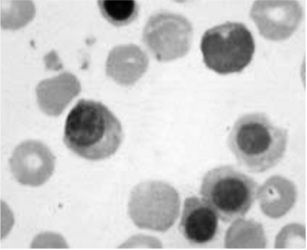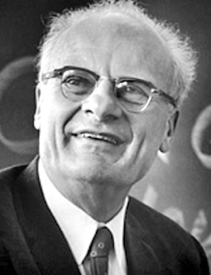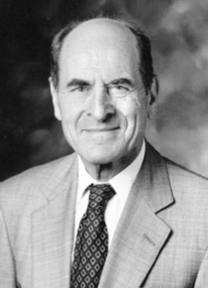A Brief History of Cornell Scientific Breakthroughs

1885 | Theobald Smith 1881 discovers the first Salmonella bacterium. Hypothesizing it to be the cause of common hog cholera, Smith named the microbe after Daniel Elmer Salmon DVM 1872, who led the research team under the United States Department of Agriculture (Salmon was also the first recipient of a DVM degree in the United States). Though Smith’s theory was later proven incorrect, the Salmonella genus was found to be responsible for several infectious illnesses, such as typhoid fever and food poisoning.
1890 | Stephen Moulton Babcock master’s degree 1875 develops the Babcock Test, an inexpensive method of measuring the fat content in milk that allowed farmers to produce milk of consistent quality. From 1907 to 1911, Babcock led a series of single-grain experiments to measure relative nutritional value among grains for cattle, leading to the establishment of nutrition as a science.
1902 | William J. Wilgus, a correspondence student at Cornell between 1883 and 1885, designs and oversees the construction of New York City’s Grand Central Terminal. Chief Engineer of the New York Central Railroad, Wilgus was responsible for the introduction of electric trains into the terminal as well as the idea for two-level stations below ground.
1910 | Florence Kimball DVM 1910 graduates from Cornell to become the first certified female veterinarian.
1939 | Philip Levine M.D. ’23 discovers the Rh factor in blood after observing hemolytic disease in infants. Levine found that a “negative” pregnant mother’s antibodies can destroy the red blood cells of her child if the child’s blood was “positive” (containing the Rh antigen). Today, an infant’s afflicted blood can undergo immediate treatment and prevent major repercussions.
1940 | William F. Friedman 1914, leads the research division of the U.S. Army’s Signals Intelligence Service to break the difficult Japanese PURPLE cipher, providing Japanese diplomatic secrets to the United States government before World War II.

1942 | Prof. Hans Bethe, physics, participates in the preliminary design meetings for the atomic bomb. A major player in the Manhattan Project, Bethe also participated in the development team for the hydrogen bomb, though he hoped to prove the weapon impossible to create and serve as a force for disarmament.
1953 | Gregory Goodwin Pincus ’24 begins testing the combined oral contraceptive pill after studying the ability of progesterone to inhibit fertility. The pills — approved by the Food and Drug Administration in 1960 — are now used by over 100 million women worldwide as a form of birth control.
1958 | The cyanoacrylate commonly known as Super Glue hits shelves, having been developed as an adhesive called “Eastman 910” by Harry Coover M.S. ’43 Ph.D. ’44. Able to bond solid objects as well as human tissues, the glue is also known for its forensic ability to capture fingerprints.
1960 | The first successful implantable pacemaker — invented by Wilson Greatbatch BEE ’50 to regulate beating of the heart — enters use after extensive animal testing. Greatbatch’s pacemaker used a mercury battery as an energy source, different from earlier designs.

1974 | Henry Heimlich ’41 M.D. ’43 publishes an article promoting an anti-choking technique consisting of repeated abdominal thrusts, now commonly advertised as the “Heimlich maneuver.”
1978 | Walter McCrone ’38 Ph.D. ’42 performs several days of forensic testing on the Shroud of Turin, a linen cloth that appears to bear the image of a bearded man who had undergone crucifixion. McCrone concluded that the Shroud had been painted, due to the presence of red pigment that others had deemed blood.
1983 | Barbara McClintock ’23 M.A. ’25 Ph.D. ’27 becomes the first and currently only woman to win an unshared Nobel Prize in Physiology or Medicine for her discovery of genetic transposition in corn plants. Transposable elements are DNA sequences that can move throughout the genome, changing how certain traits are turned “on” or “off.”
1985 | Prof. Kenneth G. Wilson, physics, directs the establishment of the Cornell Theory Center (now the Cornell University Center for Advanced Computing in Rhodes Hall), one of five original supercomputer centers created to provide high-speed computing resources within the United States.

1992 | Prof. Mae Jemison M.D. ’81 becomes the first African-American woman to travel into space, serving as the science mission specialist on the Space Shuttle Endeavor’s second spaceflight. Jemison went on to start The Jemison Group, a company that focuses on integrating technologies into developing countries.
2001 | Jon Rubinstein ’78 M.Eng ’79 leads the eight-month development of the iPod, Apple’s first portable music player. Rubinstein later became senior vice president of Apple’s newly-created iPod division in 2004.
2003 | Prof. Steve Squyres ’78 Ph.D. ’81, astronomy, leads the Mars Exploration Rover Mission as principal investigator. The mission, through the rovers Curiosity and Opportunity, returned significant findings about Mars, including evidence that water once flowed on the planet’s surface.
2013 | Cornell researchers, including Prof. Lawrence Bonassar, biomedical engineering, and Dr. Jason Spector, director of the Laboratory for Bioregenerative Medicine and Surgery and associate professor of plastic surgery at Weill Cornell, successfully create a fully-functioning synthetic human ear using 3-D printing. A collagen mold was printed based on a high-resolution 3-D image of an existing ear, then injected with living cells to grow cartilage over a three-month period.
